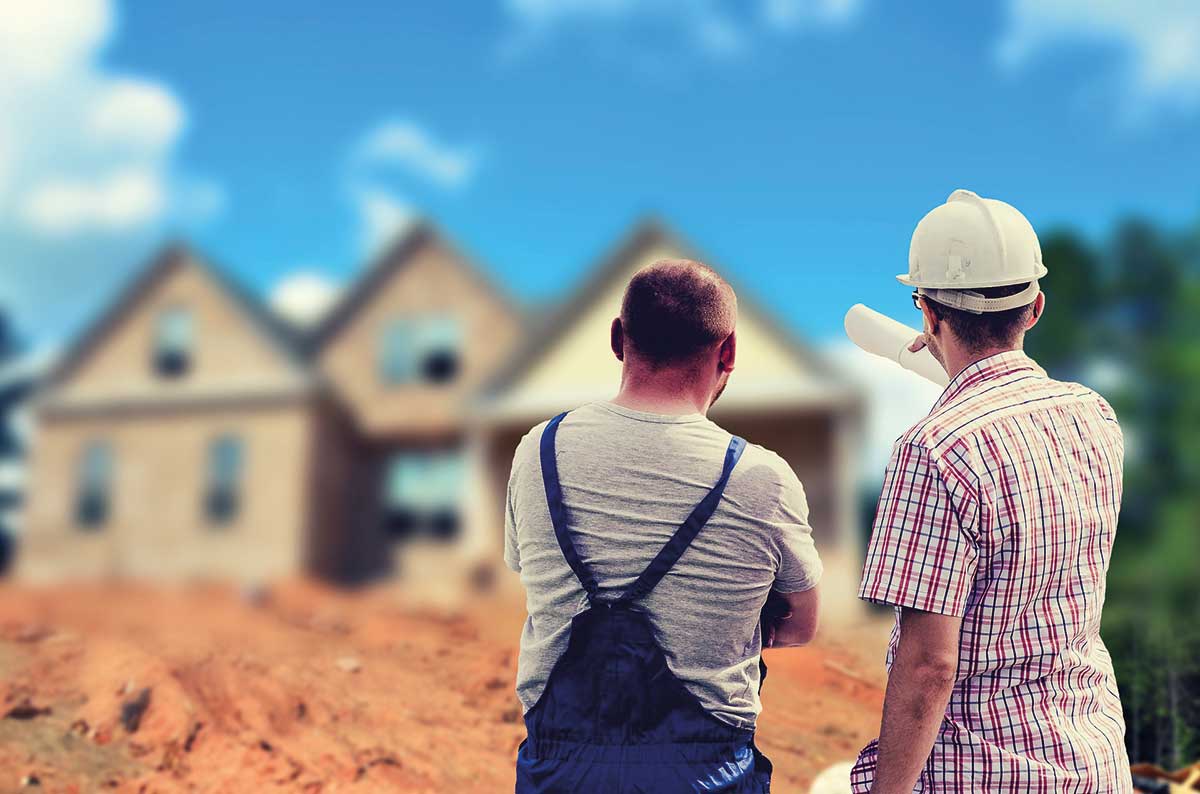Most self-builders do a lot of homework, possibly involving months of time, energy and money, before they even get to the tendering stage. Professionals have been involved, the planners had their say, topographical surveys done, bats and Roman ruins ruled out. Yet we can still get terrible surprises when the quotes come in.
Many people immediately assume they’ve chosen the wrong builders, or that someone somehow seriously misunderstood the situation. Here are a few reasons why this occurs.
1. Unrealistic expectations
A major problem with pricing one’s own new house is that many people are tempted to, if not lie, fool themselves. Most self-builders listen intently, whether this is on the grapevine, at the pub, on the web, or in magazines, to what others have paid for their build.
The trouble is that the vast majority of these sums are wrong – or incomplete. Many people tell me with pride about their new home’s cost, when what they really mean is what the builder charged them. Of course this is only a fraction of the total project cost. Conveniently, for reasons that are best known to them, all these other costs are ‘forgotten’. And they certainly never consider the approximately two thousand hours of personal time they’ll have spent over two or more years. If they might have otherwise been earning, this can amount to a lot of money.
In a nationwide market it’s also easy to get carried away with prices in parts of the country that are not yours. It’s vital to compare apples with apples as construction costs may be very much less somewhere other than where you’ll build. Then, as a group, we self-builders tend to be optimistic and ever-hopeful that we can somehow, because of our unique talents, skills, force of personality, professional advice and so on, bring a great project in for less than anyone else could.
This is nonsense and deluded. Building a dream house will not be cheap. Even building a ‘very good’ house is expensive. If you start from this position, you’ll be in for less of a shock.
[adrotate banner="58"]2. Lack of understanding of how builders work and make a profit
Builders want to use their time and skills to make a profit, just like any other business owners. This means choosing realistic builds that go as planned, with clients who don’t change their minds, where all the wrinkles have been ironed out before they start, and on which they can make a twenty percent profit.
Good builders are always in demand and today there’s a shortage of skilled people in the construction world. This means that builders can be picky about what work they choose and when they do it. Builders never charge you upfront for their work, so are always playing financial catch-up, doing the work first then getting paid for it. This makes them feel vulnerable. And indeed, many customers do let them down.
Even assuming identical costs, the more challenging the project the less attractive it will be to the builder and so the price will rise. Most of us want a simple life. Many builders will also be wary of self-builds because they fear the (ill-informed) owner will become over-involved, fussing around and changing their minds. Better do a run of four terraced houses for a developer.
Get in there, know what you’re up against, get the job done and move on to the next one. In other words, many builders won’t share your ‘dream’ – it is just a job of work for them – one which has the potential to become their nightmare.
3. He doesn’t want your job at any price – and so gives you a crazy one
Maybe you’ve chosen a builder who is so busy he doesn’t want more work. Or he doesn’t want the sort of work you are offering. It’s horses for courses, as in any industry. No good contractor will take on a project that will overstretch him in time, uncertainty, skills set or competence.
Others will price high on the basis that if you can wait for them they’ll then grace you with their work! I’ve been in this position myself, where the construction challenges were so great that very few contractors could cope. Going this route puts the builder in a very strong position – and he knows it. He then prices accordingly.
4. Your designers have become unrealistic about your budget
Obviously your designers will want to give you your dream house, within the bounds of planning possibilities, the plot and how buildable it is. But it isn’t this simple. The problem is that all too many designers end up designing a dream home for themselves, rather than for you. They forget you are the client.
And they also forget that day by day every design change and embellishment has an effect on the budget – which is your hard-earned money. A good designer will keep you in intimate touch with how the evolving design affects price. Some architects and designers have had such negative experiences with budgeting that they say at once if they feel the client has an unrealistic expectation of what can be achieved for their money. I think the reverse should also occur.
We self-builders should, in turn, keep a very watchful eye on our designers, to be sure they don’t get carried away with their enthusiasm. The trouble is that, even with value engineering or cutting costs on site, it’s usually impossible to go back to the drawing board after receiving unexpectedly high builders’ quotes and rescope the project to bring the price down.
Spend your time at this stage policing the budget rather than worrying about what sofa you’ll have.
5. You’ve left too much to the builder to second-guess
The old saying, ’To assume is to make an ASS out of U and ME’ is all too relevant when pricing a build. You will feel you are ‘right’ about what you’d assumed the builder would know and he feels ‘right’ that he is making proper assumptions from his professional experience. Neither of you is right unless you’ve both agreed what ‘right’ is. The builder then tends to assume the worst, and builds this into his price, or even comes to the conclusion that he doesn’t want to work with you if you’re this undecided – because experience has shown him that he’ll have grief later with a client like you.
He also fears being blamed for getting things wrong, in your eyes, and no one wants to run their working life like this. At a more cynical level, some builders love this lack of clarity. It is how they make high margins as they charge you for numerous ‘extras’.
6. You haven’t been sufficiently specific about fixtures and fittings
Pricing the basic structure of your home is relatively easy for a professional. Once you’ve decided on a method – masonry, kit house, concrete, timber frame, straw bales – or whatever, it’s not hard to get to a pretty definite sum for the shell. But this isn’t where pricing problems occur. We all live with high expectations today. The glossy magazines have led us to believe we should have the latest fixtures, finishes and fittings and, as a result, the cost of these items can sky-rocket our budget.
If we haven’t taken the trouble to specify each of these items exactly, we can hardly expect our builder to be able to price them. To protect themselves, they will then tend to overprice as they try to guess what you’ll actually want. They won’t want to find themselves out of pocket.
If you demand they give you a ‘turnkey’ price, they’ll have to make even more assumptions when pricing. This is all about reducing their risk. When all this goes wrong it can result in a forensic level of analysing who forgot what, who assumed what, and so on. This can be very unpleasant and ruin your pleasure in the build. It can seem very boring and even overpedantic to go to a detailed specification for your builder to price on but it is vital if you want to avoid disappointment, or worse.
7. Too much detail or over-complex documentation
You might think it unlikely that this could be a problem, especially in light of what I’ve just said. But repetitive or complicated documents can make a builder anxious or annoyed and, worse
still, assume a level of complexity that isn’t there. He then prices accordingly. Getting this level of detail right should be handled by your quantity surveyor or designer.
8. Inflation
At the start of the journey we all have a budget in mind. We then ‘infect’ the system with this figure. From now on everyone works up to this (probably somewhat notional) figure, which often doesn’t include a realistic contingency sum. Because we get excited and enthusiastic about the project we then don’t like to have to say to professionals, planners and so on that it was, in reality, our knucklebreaking final budget. And time passes.
Over the next months and possibly years, this budget becomes even more unrealistic. Of course we as the clients should police this very carefully – taking ownership and responsibility. If we allow our design team, or even the planners, to lose the run of themselves, obviously this starting budget becomes more and more unrealistic with time. And none of this allows for the very real inflation in actual build costs that can legitimately occur in the run-up to tendering.
It’s vital to set a total gross budget from Day One that everyone works within, rather than seeing it as a starting point that can somehow be reinvented over time.




